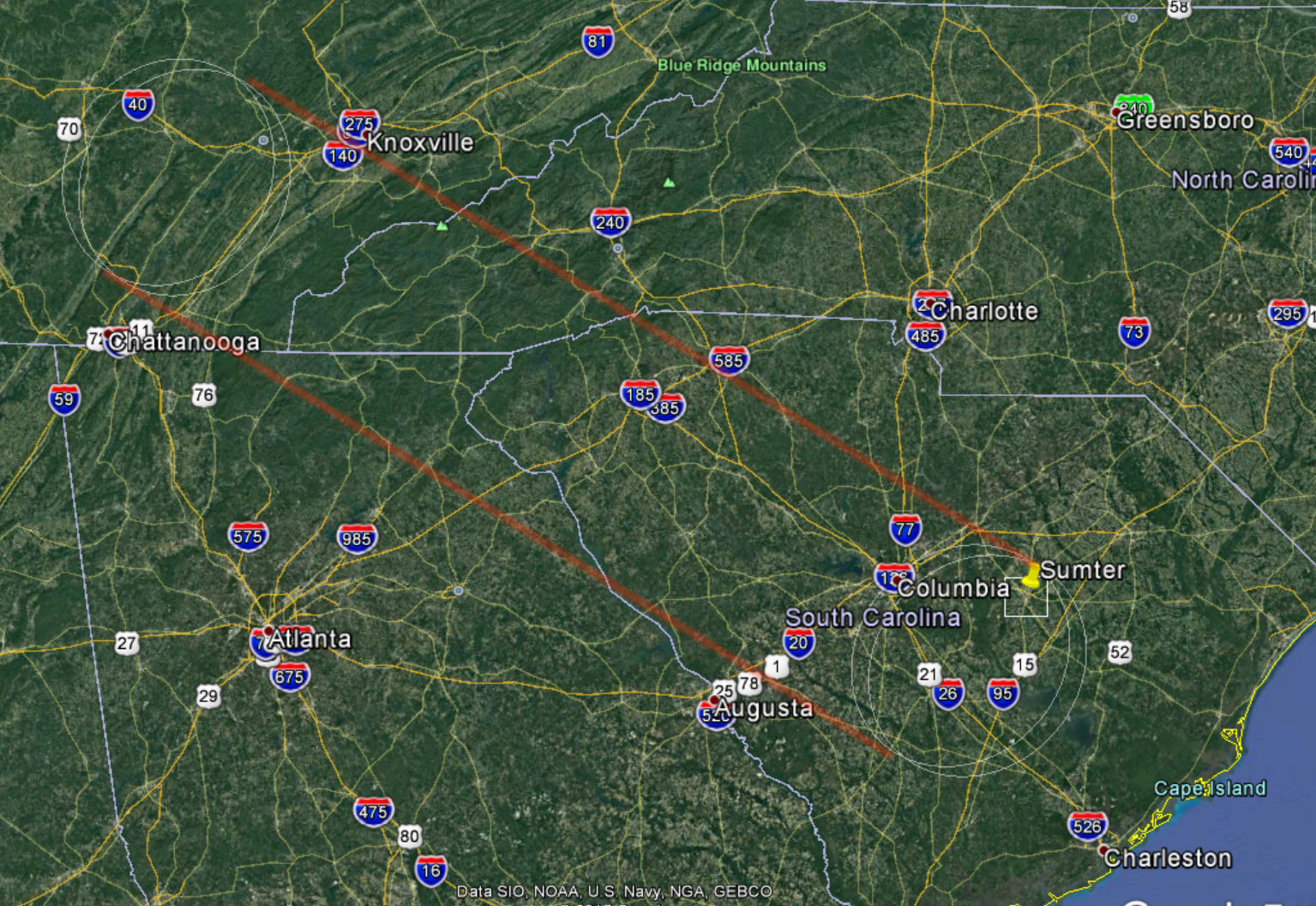-
-
Notifications
You must be signed in to change notification settings - Fork 16
Eclipse
This experiment consisted of a PiRadar node in coordination with the Virginia Tech ionosonde experiment, which has 3 sites across the US. The node was in Hamilton Branch State Park, near Modoc, SC.

The VA Tech ionosonde transmitter was on the Poinsett Electronic Combat Range, near Wedgewood, SC. The transmitter is in the northeast edge of the total eclipse.
To get the sharpest on/off transition in solar excitation, the receivers are on the other side of the eclipse zone.
The geographic diversity also implies temporal diversity, as we watch the same process repeatedly (assuming releatively homogeneous background ionosphere).
- Baker Creek State Park (33.89N, -82.36W)
- Aiken State Park (33.55N, -81.49W)
- Barnwell State Park (33.33N, -81.30W)
- Colleton State Park (33.06N,-80.62W)
State of South Carolina GNSS reference receivers Most of the sites appear to have 1 second cadence. The GNSS receivers via standard data inversion techniques provide information on the state of the ionosphere before, during, and after the eclipse. GNSS receivers of interest include:
| GNSS RX | Location |
|---|---|
| COLA | Columbia |
| SCSR | Sumter |
| SCGT | Greenville |
| SCWT | |
| SCLN | |
| SCSM | |
| SCOG |